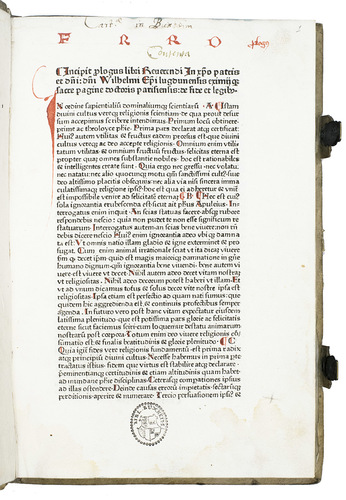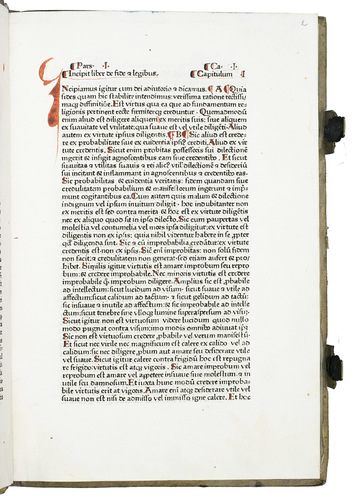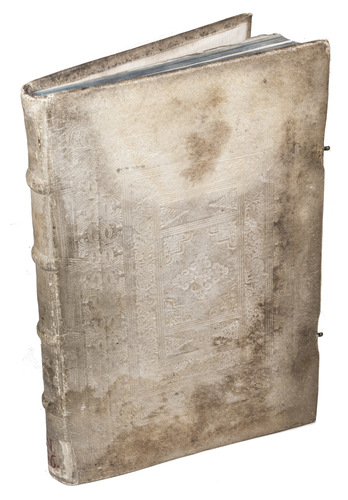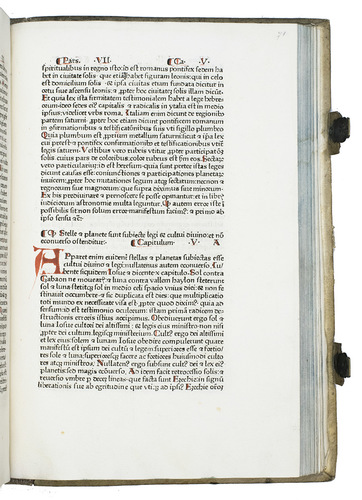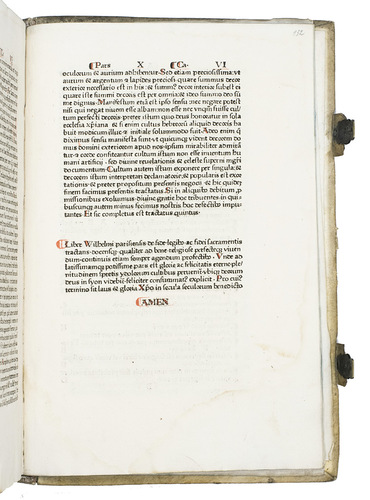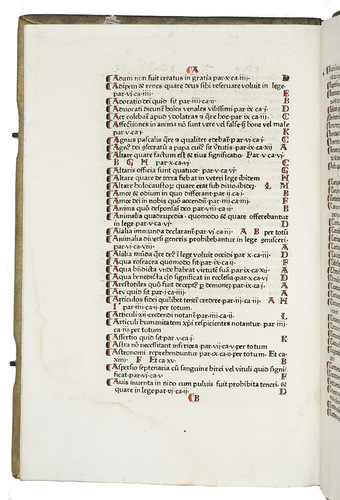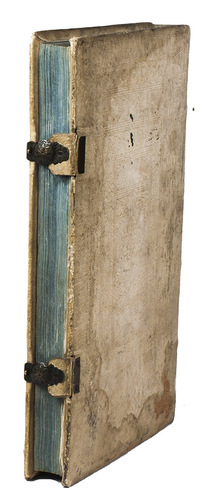ALVERNUS, Guillelmus (William of AUVERGNE).
Libri ... de fide et legibus.
[Augsburg, Günther Zainer, ca. 1475/1476]. Small folio. Set in a hybrid roman type with gothic elements (a single column of 43 lines per page plus running heads), with the first 3 lines, including the title, in a slightly larger rotunda gothic. With all initials supplied in manuscript in red, rubricated throughout. Contemporary, richly blind-tooled vellum over wooden boards, two brass clasps, blue edges, "Nr. 56" in red ink written at the foot of the spine. [139] ll.
€ 45,000
Incunable first edition of De fide et legibus (On faith and laws), one of the most important works of William of Auvergne (post 1180 - 1249) and the first of his works to be printed. It forms one of seven parts of his principal monumental work Magisterium divinale (The divine teaching), a compendium of philosophy and theology that attempts to explain the whole natural world. The parts were first printed as separate works and no more appeared in print until Georg Stuchs in Nürnberg published the second edition of De fide et legibus and two other parts in a collection of Auvergnes works in 1496, followed by three more parts in 1497.
William of Auvergne was one of the most prominent French philosophers and theologians of the early 13th century. He was Bishop of Paris from 1228 until his death in 1249 and although he was in the very Christian position of bishop, he was one of the first Western scholars to try to integrate classical Greek, Arabic and Jewish philosophy, for example Aristotle, Solomon ibn Gabirol (Avicebron) and especially Ibn Sina (Avicenna), with Christian doctrine. These writings had recently become available in Latin translation. On the one hand this allowed William to oppose errors he considered dangerous for Christian beliefs, but on the other hand he found a large source of philosophical inspiration in these Greek, Arabic and Jewish texts.
Although the book bear neither a year of publication nor the name of a printer or publisher, Günther Zainer (1430-1478) listed it in a 1476 advertisement and it is set in his type. Zainer established the first printing office in Augsburg. This beautiful incunable in chancery folio is not only a rich source for medieval philosophy and theology, but also - as Thorndike confirms - a picture of magic, superstition and idolatry in the first half of the 13th century.
With a contemporary inscription: "Cart. in Buxheim. Contenta" and a small stamp of the "Bibl. Buxheim'" on the first page. The book therefore originally belonged to the Carthusians at Buxheim in Germany. The publisher Günther Zainer was known for his gifts to the Carthusian monastery in Buxheim and our copy of William of Auvergne's work was probably one of them. The monastery's library was sold in the 19th-century. Also with the bookplate of the library of George Dunn (1865-1912), an English bibliophile with an impressive library at Woolley Hall and a particular interest in paleography and early printing. Binding slightly stained and rubbed, first and last leaf somewhat loose, some water stains (especially at the end of the book), but still a beautiful copy in good condition. BMC II 323; Goff G 711; GW 11863; Hain-Copinger 8317; IGI 4602; ISTC ig00711000; Oates 883; Polain 1807; Proctor 1556; for the author: Thorndike III, pp. 338-371.
Related Subjects:







